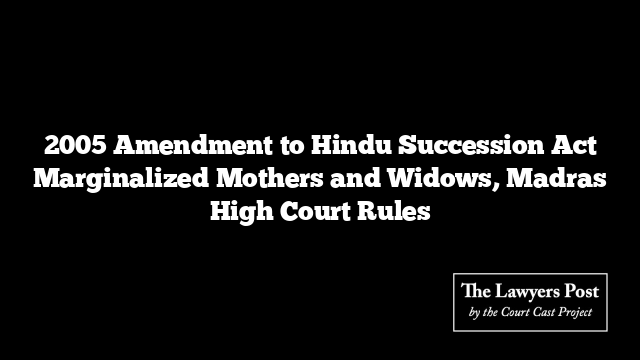In a notable ruling, the Madras High Court recently highlighted a critical oversight in the 2005 amendment to the Hindu Succession Act, which, while granting daughters coparcenary rights in ancestral property, inadvertently reduced the share of mothers and widows. The court’s observations came while granting a second appeal filed by two women, Vasumathi and Malathi, who were denied an equal share in their ancestral property by their father and brothers.
Justice N. Seshasayee, in his judgment on November 8, pointed out that the amendment, intended to elevate daughters’ status in Hindu Undivided Families (HUF), had diminished the entitlements of widows and mothers as Class I legal heirs. Despite enhancing daughters’ rights as coparceners, the change resulted in a smaller share for the deceased’s mother and widow. Justice Seshasayee remarked that while daughters gained the right to coparcenary, this shift effectively reduced the inheritance for these female heirs, without any significant legislative changes to the core principles of Hindu law governing ancestral property.
The case involved a dispute over a property inherited by the appellants’ father in 1986 through a notional partition with his brothers. The women, arguing that they were entitled to a 1/5th share in the ancestral property, claimed that the 2005 amendment granted them coparcenary rights alongside their father and brothers. Justice Seshasayee supported their argument, emphasizing that the property remained ancestral, as per Sections 6 and 8 of the Hindu Succession Act.
The judgment also addressed a settlement deed executed by the appellants’ father in 2008, which allocated shares to his two sons. However, since the 2005 amendment was already in effect, the court ruled that the appellants, as coparceners, were entitled to their rightful share of the property. This reaffirmed that the property in question was ancestral, and the women had legal rights to it.
In the broader context, the court’s ruling sheds light on the unintended consequences of the 2005 reform, illustrating how changes meant to benefit one group inadvertently sidelined another.





